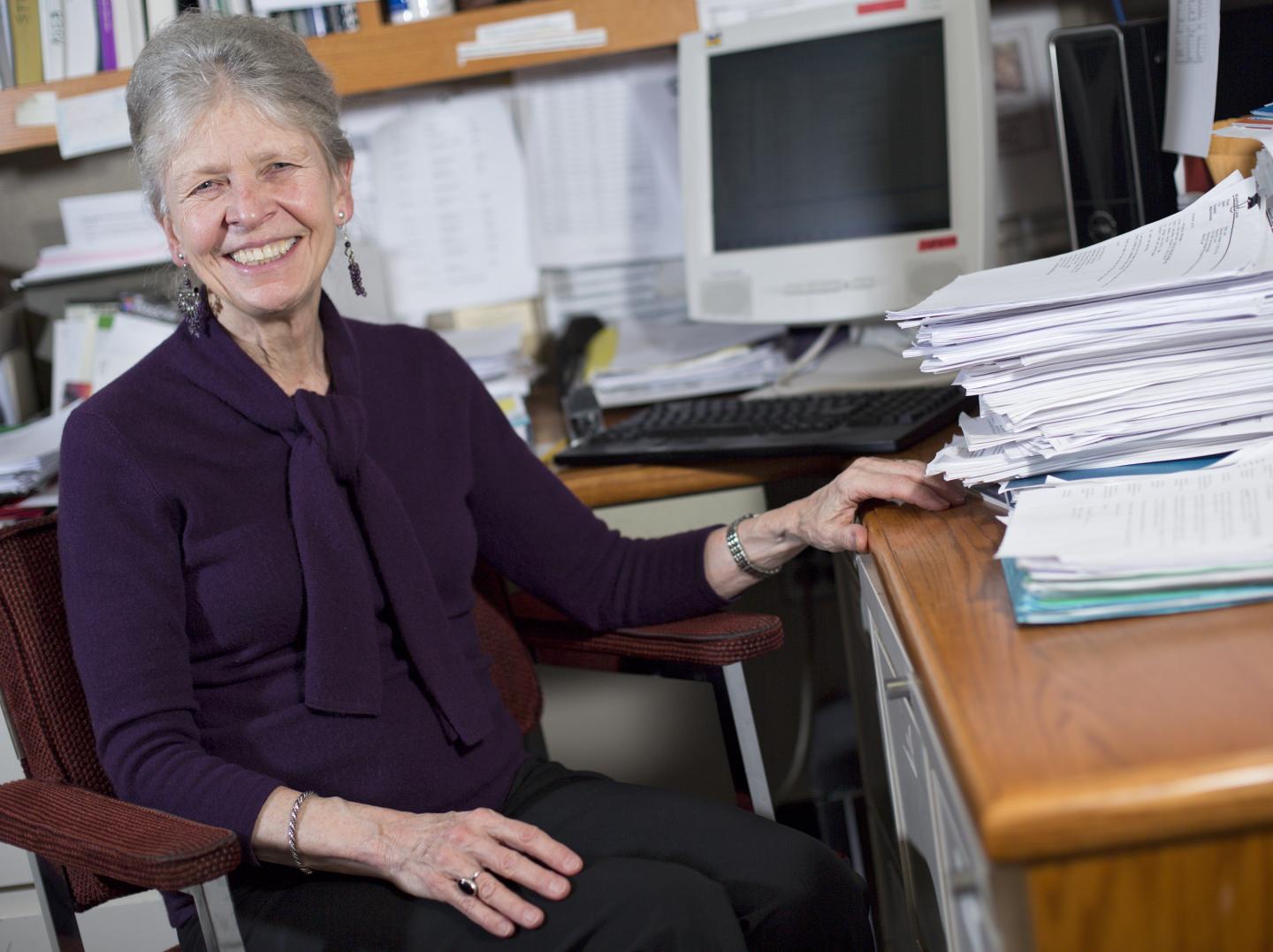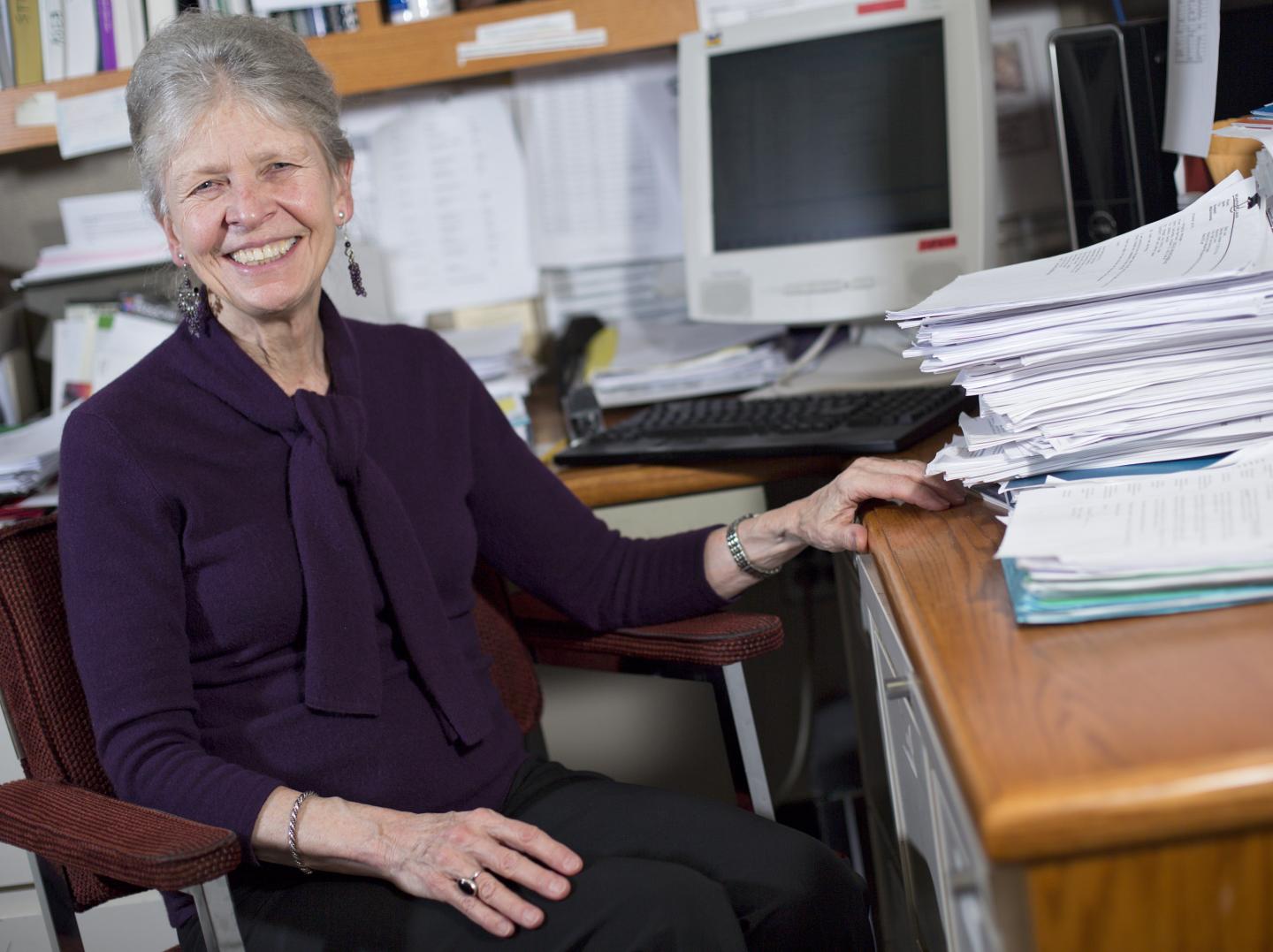
Credit: Brian Ach/AP Images for HHMI
The Albert and Mary Lasker Foundation announced today that Howard Hughes Medical Institute (HHMI) Investigator Joan A. Steitz of Yale University has won the 2018 Lasker~Koshland Special Achievement Award in Medical Science.
The award recognizes Steitz's four decades of leadership in biomedical science – she's made pioneering discoveries in RNA biology and is a generous mentor of young scientists and vigorous supporter of women in science, according to the Lasker Foundation announcement.
"When I started, RNA was just the middle molecule in the paradigm 'DNA makes RNA makes protein' – it was just the messenger," Steitz said in a press conference hosted by the Lasker Foundation. "What's happened since then is that our landscape – the world of RNA – has just exploded and expanded tremendously. What we now realize is that RNA plays a regulatory role in so many of the processes that get the information out of our genes and into the working proteins that make our cells do what they do."
Steitz joins 2018 winners C. David Allis from The Rockefeller University and Michael Grunstein from the University of California, Los Angeles, who will share the Albert Lasker Basic Medical Research Award, and John B. Glen, formerly from AstraZeneca, who will receive the Lasker~DeBakey Clinical Medical Research Award. Each award category carries an honorarium of $250,000. The awards will be presented Friday, September 21, in New York City.
Steitz has been an HHMI investigator since 1986. She studies small, non-coding RNA molecules, which are essential for gene expression in most cells.
Steitz was introduced to RNA, a molecular cousin of DNA, as an undergraduate at Antioch College in Ohio. It had a work-study program that placed her in Alex Rich's lab at the Massachusetts Institute of Technology, where she began her first RNA project. His was one of the first labs to study molecular biology, she said. "I think I fell in love with RNA at that point."
Such research experiences are critical for students who are exploring their career options, Steitz said. "Getting undergraduates and even high school students into the lab early is so important because they'll figure out if they like a particular area or particular project – and that may turn out to be their life's devotion."
Steitz said the achievement for which her lab is best known is the discovery of small nuclear ribonucleoproteins, or snRNPs (pronounced "snurps"), which are tightly bound complexes of proteins and small non-coding RNAs. Her team discovered snRNPs in 1979 and showed that they are critical for the removal of introns – segments of genetic material that interrupt a gene's protein-coding sequence.
Introns are copied into an RNA molecule along with the rest of a gene and must be removed before the RNA can be used as a template for protein synthesis. The removal process, called splicing, takes place in large snRNP-protein complexes called spliceosomes that assemble directly on introns. After showing that snRNPs are essential for splicing, Steitz's lab deciphered how particular snRNPs recognize intron splice sites.
SnRNPs help to "very precisely snip out what needs to be thrown away and glue back together the parts of the genes that can actually be a messenger RNA for proteins," she said. Steitz's seminal 1980 paper in the scientific journal, Nature, "Are snrNPs involved in splicing?," clinched her scientific reputation.
Her subsequent work has identified additional snRNPs that participate in the excision of different types of introns and in developmentally controlled mRNA processing. Her group has also discovered small nucleolar RNAs (snoRNAs), which prepare ribosomal RNA as a building material for cells' protein factories, trimming precursor molecules to the right size and chemically modifying them in precise ways.
Even smaller bits of non-coding RNA, called microRNAs, influence the stability of mRNA molecules and their translation into proteins. Steitz's work has helped explain how microRNAs are generated and processed inside cells.
She also investigates how viruses use non-coding RNAs to manipulate host cells. Her group has found that a herpes virus causes T-cell lymphoma in monkeys by using a snRNP to degrade host microRNA, releasing the brake on growth-promoting genes. Her group's work has also uncovered the function of non-coding RNAs generated by two other cancer-causing viruses, the Epstein-Barr virus and Kaposi's sarcoma-associated herpesvirus.
Steitz credits the discoveries and advances her team has made over the years to the researchers in her lab: "I did this with a wonderful lab full of younger colleagues who are enthusiastic and innovative and insightful, and it's to them that I'm really grateful."
###
Media Contact
Meghan Rosen
[email protected]
301-215-8859
@HHMINEWS
http://www.hhmi.org
Original Source
https://www.hhmi.org/news/joan-steitz-receives-2018-laskerkoshland-special-achievement-award-medical-science





